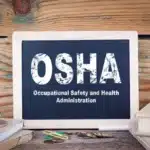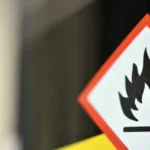Safety on a job site is everyone’s problem, and preventing workplace accidents is a team effort. There are ripple effects when an incident or accident occurs; there are consequences for your company, clients, and other employees on the job site, not to mention the individual and family of those directly involved. One way to enhance the safety program at your organization is to focus on situational awareness. Situational awareness involves paying attention and being aware of your surroundings; it is vital for preventing accidents, mitigating risks, and fostering a safety culture. Defined as the perception and understanding of one’s surroundings and the ability to anticipate potential hazards or threats, situational awareness is a skill and mindset that must be cultivated and practiced within any workplace environment. As the holiday season approaches and distractions increase, it’s easy for everyone to get caught up in their to-do lists. Take a moment this month to refresh your focus on situational awareness and help prevent workplace accidents at your facilities.
Understanding Situational Awareness
Situational awareness involves being attuned to various environmental factors, including people, objects, events, and their interrelationships. It encompasses a three-tiered model:
Perception: Recognizing and interpreting relevant information from the environment.
Comprehension: Understanding the significance of the perceived information.
Projection: Anticipating future events or developments based on the gathered information.
In a workplace context, employees must be vigilant about their surroundings, attentive to potential risks, and proactively address them before they escalate into incidents.
Importance in Workplace Safety
Situational awareness is not only crucial for individual safety but also for the overall well-being of an organization. Here’s why it matters:
Accident Prevention
Situational awareness is essential for identifying and preventing hazards in the workplace. By staying alert to potential risks—such as slippery floors, malfunctioning equipment, or unsafe practices—employees can take proactive measures to avoid accidents. Effective hazard prevention begins with tasks like pre-planning to identify and mitigate risks, as well as avoiding restriced areas and staying informed about weather conditions. For example, monitoring weather forecasts for extreme events like tornadoes, hurricanes, or high winds can help prevent additional risks. Even simple weather-related factors, such as glare from sunlight, should be considered, with appropriate precautions like wearing tinted safety glasses. Additionally, being mindful of proper body positioning, understanding the importance of equipment safety features (e.g., machinery guards, covers, emergency disconnects), and recognizing emergency stop procedures are all crucial elements of situational awareness. This heightened vigilance plays a key role in reducing workplace injuries and illnesses.
Emergency Response
In an emergency such as a fire, chemical spill, or medical crisis, heightened situational awareness can enable swift and effective responses. Employees aware of emergency exits, fire extinguishers, eyewash stations and showers, evacuation procedures, and safety protocols are better equipped to navigate crises and minimize harm.
Enhanced Decision-Making
Situational awareness empowers employees to make informed decisions in real-time, especially in dynamic or high-pressure situations. Whether adjusting workflow to accommodate changing conditions or halting operations due to safety concerns, individuals with heightened awareness can act decisively to protect themselves and their colleagues.
Promoting a Safety Culture
When situational awareness becomes ingrained in the organizational culture, it fosters a collective commitment to safety among employees at all levels. By prioritizing awareness and vigilance, workplaces can create an environment where safety is not just a set of rules but a shared responsibility everyone embraces.
Cultivating Situational Awareness
Developing and maintaining situational awareness requires both individual effort and organizational support. Here are some strategies to enhance situational awareness in the workplace:
Training and Education
Provide comprehensive training on workplace hazards, safety protocols, and emergency procedures. Ensure that employees understand the importance of situational awareness and how it contributes to their safety and the safety of their colleagues. But how do you teach situational awareness? Like any skill, it must be taught and practiced. It involves encouraging observation, teaching active listening, and limiting distractions. The SLAM method is often used to teach this skill (S-Stop, L-Look, A-Assess, M-Manage). Awareness of others, speaking up when dangerous situations occur, and identifying hazards are all skills that can be mastered.
Regular Risk Assessments
Conduct routine assessments to identify potential hazards and risks in the workplace. Encourage employees to promptly report and promptly address any safety concerns to mitigate potential dangers.
Open Communication
Foster a culture of open communication where employees feel comfortable sharing safety-related information and concerns. Encourage teamwork and collaboration in identifying and addressing safety issues collectively.
Utilize Technology
Deploy technological solutions such as sensors, alarms, and monitoring systems to augment situational awareness. These tools can provide real-time data on environmental conditions, equipment status, and potential safety threats, enabling proactive intervention.
Prevent Fatigue
Fatigue plays a role in concentration and awareness. When we are tired, we don’t think as clearly or sharply. Encourage employees to get enough sleep and rest to function at total capacity.
Lead by Example
Leadership plays a critical role in promoting situational awareness. Lead by example by demonstrating vigilant behavior, adhering to safety protocols, and actively engaging in risk mitigation efforts. Encourage supervisors and managers to prioritize safety in their decision-making and communication.
Situational awareness is a fundamental element of effective safety management. By fostering a culture of awareness, vigilance, and proactive risk mitigation, organizations can create safer, healthier, and more productive environments for their employees. From accident prevention to emergency response, the benefits of situational awareness extend far beyond individual safety; it can protect the well-being and livelihoods of everyone within the organization. Please take a few minutes this month to highlight the importance of situational awareness in the workplace.
Consider incorporating this topic into your next toolbox talk or using it as a starting point for a safety meeting. Situational awareness can be crucial in preventing accidents and improving overall safety culture. Feel free to reach out if you need additional support or resources to enhance your safety program. We offer various services, including safety training and consulting, expert witness services, crane safety services, and safety management staffing. Let us help you create a safer work environment. Contact us today; we’d love to hear from you.


